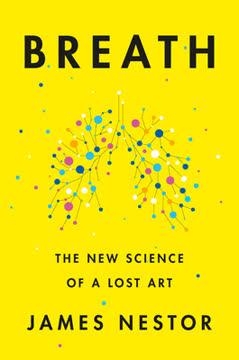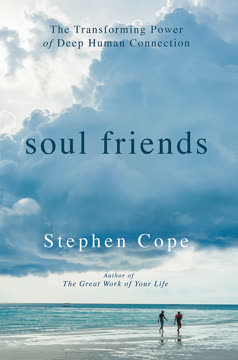نکات کلیدی
1. کشف دارما: مسیر به سوی تحقق و هدف
"اگر آنچه در درون شماست را به ظهور برسانید، آنچه به ظهور میرسانید شما را نجات خواهد داد؛ اگر آنچه در درون شماست را به ظهور نرسانید، آنچه به ظهور نمیرسانید شما را نابود خواهد کرد."
دارما، ندای زندگی شماست. این نقش منحصر به فردی است که شما باید در جهان ایفا کنید، بر اساس استعدادها و علاقههای ذاتیتان. کشف و زندگی کردن دارما برای یک زندگی پرمعنا ضروری است.
سفر به سوی دارما شامل:
- خوداندیشی و تأمل درونی
- شناسایی هدایا و علایق طبیعی خود
- همراستا کردن اقدامات خود با حقیقت درونیتان
- غلبه بر تردید و ترس برای پیگیری هدفتان
بسیاری از افراد در یافتن دارما خود دچار مشکل میشوند، اغلب به این دلیل که بر انتظارات خارجی یا هنجارهای اجتماعی تمرکز دارند. با این حال، تحقق واقعی از پذیرش خود واقعی و ارائه هدایا و استعدادهای منحصر به فردتان به جهان ناشی میشود.
2. هدیهتان را بپذیرید: به استعدادهای ذاتیتان اعتماد کنید
"بهتر است در دارمای خود شکست بخورید تا اینکه در دارمای شخص دیگری موفق شوید."
هدیه شما، سهم منحصر به فرد شماست. هر فردی استعدادها و تواناییهای ذاتی دارد که با پرورش و توسعه آنها میتوان به دستاوردهای فوقالعاده و رضایت شخصی دست یافت.
پذیرفتن هدیهتان شامل:
- شناسایی و ارزشگذاری تواناییهای طبیعی خود
- توسعه استعدادها از طریق تمرین هدفمند
- اعتماد به فرآیند رشد و یادگیری
- مقاومت در برابر تمایل به مقایسه خود با دیگران
شخصیتهای بزرگ تاریخ، مانند جین گودال و هنری دیوید ثورو، با پذیرش کامل هدیههای منحصر به فرد خود به موفقیت دست یافتند. داستانهای آنها نشان میدهد که اعتماد به استعدادهای ذاتیتان میتواند به مشارکتهای عمیق در جامعه و تحقق شخصی منجر شود.
3. اقدامات خود را یکپارچه کنید: به طور کامل به ندای خود متعهد شوید
"زمانی که مدیتیشن به تسلط رسید، ذهن مانند شعله یک لامپ در مکانی بدون باد ثابت میماند."
یکپارچگی کلید تسلط است. برای اینکه به طور کامل دارما خود را تحقق بخشید، باید تمام جنبههای زندگیتان را با ندای خود همراستا کنید و انرژی و تعهد متمرکزی به مسیر انتخابیتان بیاورید.
یکپارچه کردن اقدامات شامل:
- سازماندهی زندگیتان حول دارما
- حذف حواسپرتیها و تعهدات غیرضروری
- توسعه یک تمرین یا روال منظم
- پرورش تعهد یکدست به هدفتان
نمونههایی مانند لودویگ فان بتهوون و کامیل کورو قدرت یکپارچگی را نشان میدهند. با تعهد کامل به هنر خود، آنها توانستند به سطوح فوقالعادهای از تسلط دست یابند و آثار ماندگاری خلق کنند که همچنان الهامبخش هستند.
4. از نتایج رها شوید: تمرین عدم وابستگی
"شما حق دارید کار کنید، اما هرگز حق ندارید به میوه کار وابسته باشید."
عدم وابستگی انرژی شما را آزاد میکند. با رها کردن وابستگی به نتایج خاص، میتوانید بیشتر بر لحظه حال و کیفیت اقدامات خود تمرکز کنید.
تمرین عدم وابستگی شامل:
- تمرکز بر فرآیند به جای نتایج
- پذیرش هم موفقیت و هم شکست با آرامش
- شناسایی اینکه نمیتوانید بر تمام نتایج کنترل داشته باشید
- یافتن شادی در عمل انجام دادن، نه در پاداشهای خارجی
زندگی شخصیتهایی مانند رابرت فراست و جان کیتس قدرت عدم وابستگی را نشان میدهد. با تمرکز بر هنر خود به جای تأیید خارجی، آنها توانستند آثار هنری بیزمانی خلق کنند و به تحقق عمیق شخصی دست یابند.
5. سختیها را به رشد تبدیل کنید: چالشها را به فرصتها تبدیل کنید
"زمانی که مشکلات پیش میآید، آنها را به عنوان دارما ببینید."
سختی میتواند کاتالیزوری برای رشد باشد. چالشها و موانع، زمانی که با ذهنیت درست مواجه شوند، میتوانند به فرصتهایی برای توسعه شخصی و درک عمیقتر تبدیل شوند.
تبدیل سختی به رشد شامل:
- بازتعریف مشکلات به عنوان تجربیات یادگیری
- توسعه تابآوری و سازگاری
- یافتن معنا در رنج
- استفاده از چالشها برای عمیقتر کردن تعهدتان به دارما
داستان مبارزه ماریون وودمن با سرطان این اصل را به خوبی نشان میدهد. با پذیرش بیماریاش به عنوان بخشی از سفرش، او توانست معنا و رشد عمیقتری از تجربهاش بیابد.
6. تسلیم به هدفی بالاتر: با الهی ارتباط برقرار کنید
"من انجامدهنده نیستم."
تسلیم تأثیر شما را افزایش میدهد. با شناسایی اینکه شما بخشی از چیزی بزرگتر از خودتان هستید، میتوانید به منبعی بزرگتر از قدرت و الهام دست یابید.
تسلیم به هدفی بالاتر شامل:
- شناسایی ارتباط متقابل همه چیزها
- رها کردن انگیزههای مبتنی بر خود
- همراستا کردن اقدامات خود با اصول جهانی
- اعتماد به قدرتی بالاتر یا حکمت جهانی
زندگی شخصیتهایی مانند مهاتما گاندی و هریت تابمن قدرت تسلیم به هدفی بالاتر را نشان میدهد. با اختصاص دادن خود به اهدافی بزرگتر از منافع شخصی، آنها توانستند تغییرات عمیقی در جهان ایجاد کنند.
7. با بیباکی زندگی کنید: شجاعت را در خدمت دیگران پرورش دهید
"زمانی که دیگر قادر به تغییر یک وضعیت نیستیم، به ما چالش داده میشود که خود را تغییر دهیم."
بیباکی از خدمت بیخودانه ناشی میشود. با تمرکز بر نیازهای دیگران و اختصاص دادن خود به هدفی بزرگتر از خودتان، میتوانید بر ترسها و محدودیتهای شخصی خود غلبه کنید.
پرورش بیباکی شامل:
- توسعه حس قوی از هدف
- تمرین همدلی و شفقت
- پذیرش ریسکهای حسابشده در خدمت دارما
- ساخت تابآوری از طریق مواجهه با چالشها
زندگی مهاتما گاندی این اصل را به خوبی نشان میدهد. از طریق تعهدش به مقاومت غیرخشونتآمیز و خدمت به دیگران، او توانست بر ترسهای شخصی خود غلبه کند و حرکتی را رهبری کند که یک ملت را متحول کرد.
آخرین بهروزرسانی::
FAQ
What's The Great Work of Your Life about?
- Focus on Dharma: The book explores the concept of dharma, which is one's sacred duty or calling in life, drawing from the Bhagavad Gita to help individuals discover and fulfill their unique vocations.
- Real-Life Examples: Stephen Cope uses stories of both famous figures and ordinary individuals to demonstrate how they navigated their paths to dharma, inspiring readers to reflect on their own lives.
- Practical Guidance: It provides practical advice on identifying and pursuing one's dharma, emphasizing commitment and action in the process of self-discovery.
Why should I read The Great Work of Your Life?
- Inspiration for Self-Discovery: Ideal for anyone feeling lost or unfulfilled, it encourages exploration of inner potential and finding one's true calling.
- Timeless Wisdom: Cope's reinterpretation of the Bhagavad Gita makes ancient wisdom accessible and relevant to modern struggles and aspirations.
- Engaging Storytelling: The author’s storytelling makes complex philosophical concepts relatable, captivating readers with the lives of those who pursued their dharma.
What are the key takeaways of The Great Work of Your Life?
- Four Pillars of Dharma: Cope outlines four principles for living a life aligned with one's dharma: Look to your dharma, Do it full out, Let go of the fruits, and Turn it over to God.
- Importance of Action: Action is crucial in pursuing dharma; one must engage fully in their calling without attachment to the outcome.
- Unity of Purpose: Aligning thoughts, words, and actions with one's calling leads to fulfillment and happiness.
What are the best quotes from The Great Work of Your Life and what do they mean?
- “Every man has a vocation to be someone.” This quote by Thomas Merton highlights the importance of discovering and embracing one's true self for fulfillment.
- “If you bring forth what is within you, what you bring forth will save you.” From the Gnostic Gospel of Thomas, it emphasizes the transformative power of self-expression and realizing one's potential.
- “It is better to fail at your own dharma than to succeed at the dharma of someone else.” This teaching from Krishna underscores the importance of pursuing one's unique calling, valuing authenticity over success.
How does The Great Work of Your Life relate to the Bhagavad Gita?
- Central Themes: The book draws heavily on the Bhagavad Gita, exploring duty, action, and self-realization through Krishna and Arjuna's dialogue.
- Krishna's Guidance: Cope illustrates how Krishna's advice about understanding one's true nature and acting without attachment is applicable to modern life.
- Moral and Ethical Action: The Gita's emphasis on righteous action and fulfilling one's duties resonates throughout Cope's narrative.
What is the significance of dharma in The Great Work of Your Life?
- Central Theme: Dharma represents one's true calling or purpose, essential for achieving fulfillment and happiness.
- Connection to the Bhagavad Gita: The book uses its teachings to illustrate how individuals can navigate their paths to dharma.
- Personal Responsibility: Emphasizes personal responsibility in shaping one's life, encouraging ownership of choices and actions.
How does Stephen Cope suggest we find our dharma?
- Trust in Your Gifts: Recognize and trust innate gifts and talents, reflecting on what you are naturally drawn to and passionate about.
- Think of the Small as Large: Embrace small opportunities that align with dharma, as they can lead to greater fulfillment.
- Listen for the Call of the Times: Align personal aspirations with societal needs to find dharma in a way that serves both self and others.
What are the Four Pillars of Dharma outlined in The Great Work of Your Life?
- Look to Your Dharma: Discern your unique calling and purpose through self-reflection and awareness.
- Do It Full Out: Commit passionately to pursuing your dharma, giving your all regardless of the outcome.
- Let Go of the Fruits: Focus on the process rather than the outcome, fostering peace and fulfillment.
- Turn It Over to God: Surrender efforts to a higher power, trusting that actions are part of a larger plan.
What specific method or advice does The Great Work of Your Life offer?
- Walk by Faith: Trust in inner guidance and act on instincts, even amidst uncertainty, as exemplified by figures like Harriet Tubman.
- Let Go of the Fruits: Focus on action itself rather than outcomes, reducing anxiety and engaging fully in work.
- Take Yourself to Zero: Gandhi's principle of reducing oneself to zero to align more closely with true purpose.
How can I identify my own dharma according to The Great Work of Your Life?
- Self-Reflection: Engage in deep self-reflection to uncover passions, values, and what truly matters.
- Listening to Inner Guidance: Tune into intuition and inner voice for insights into true calling.
- Trial and Error: Experiment and explore different paths to gain a clearer understanding of what resonates.
What challenges might I face in pursuing my dharma as described in The Great Work of Your Life?
- Fear and Doubt: Overcome fear and self-doubt through faith and trust in the process.
- Resistance from Others: Stay true to your path despite potential conflict with family or friends.
- Balancing Responsibilities: Integrate calling into daily life to balance dharma with everyday obligations.
How does The Great Work of Your Life encourage readers to embrace suffering?
- Suffering as a Teacher: Embrace challenges as opportunities for personal growth and deeper understanding.
- Transforming Pain into Purpose: Historical figures transformed suffering into meaningful action, inspiring readers to find purpose in struggles.
- Acceptance of Impermanence: Accept life's impermanence and inevitability of suffering for a more profound appreciation and commitment to living authentically.
نقد و بررسی
کتاب کار بزرگ زندگی شما نوشتهی استیون کوپ به بررسی مفهوم دارما از طریق باگود گیتا و زندگینامههای شخصیتهای برجسته میپردازد. خوانندگان این کتاب را الهامبخش و تفکر برانگیز یافته و از نوشتار قابل دسترس و حکمت عملی آن تمجید کردهاند. بسیاری از آنها از ترکیب فلسفه شرقی و مثالهای مدرن قدردانی کردهاند. برخی منتقدان احساس کردند که کتاب بیش از حد بر روی افراد مشهور تمرکز کرده و راهنمایی برای افراد عادی ارائه نمیدهد. بهطور کلی، بررسیکنندگان این کتاب را برای خوداندیشی و کشف هدف زندگی مفید دانسته و بسیاری از آنها برنامهریزی کردهاند تا برای کسب بینش بیشتر دوباره آن را مطالعه کنند.
Similar Books
















